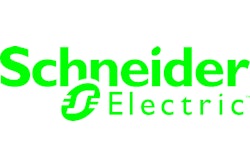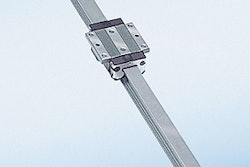
Third generation began as a European phenomenon in the late 1990’s with several machinery introductions at Interpack in 1999 and more in 2002. What these machines had in common was a radically different approach to control and mechanical design.
First these machines were designed ‘mechatronically’ meaning servo control became fundamental to the mechanical design replacing mechanical components wholesale. Although still an obscure discipline in our own educational system mechatronics has been an established engineering curriculum for decades in European and Japanese universities.
Next it was recognized that PLC architectures couldn’t achieve the desired performance – not without adding arrays of PLC processors and hardware interfaces to motion control modules. It had become clear that 30 percent of a machine’s program was devoted to handshaking interfaces between the PLC and motion controller. These unnecessary hardware and software interfaces dragged down system response.
The solution came in the form of embedded Pentium class processors and an established programming language standard (IEC 61131-3) that could embed powerful motion functions seamlessly within familiar ladder logic programs.
Thus began the rapid rise of ‘Generation 3’ packaging machinery.
Gen3 comes to America
If Gen3 machinery has been on the market for four years then why are we just hearing about it now in North America?
There are several reasons. European OEMs waited to launch their products in their home markets before exporting for one. But more important is a cultural difference.
In Europe machine builders have always been free to adopt technology as they see fit. The builders set their performance goals and automation suppliers compete on the basis of performance. Packagers also purchase machinery based on a performance specification. Standards are widely used for programming and networking so automation vendor specifications are unnecessary.
As a result innovation flourished in the form of reliable fast and flexible highly maintainable Gen3 machinery.
In the US market however packagers had learned the hard way that choosing a new motion controller or PLC meant learning a new language and supporting a range of components. There was little interoperability. And recall that in the early to mid-90’s the market was flooded with rival device and motion networks as well.
Packagers’ only alternative was to standardize on one or two vendors. Machine builders complied and a status quo was established.
Gen3 revives competition
The vendor spec was conceived as a defense mechanism against the high cost of supporting multiple control platforms. But it inadvertently became a disincentive for US machine builders to develop their own innovative designs that would require higher performance controls. And the lack of competition between controls suppliers stifled innovation.
But this is changing. The European Gen3 machines required new control suppliers to achieve their performance so packagers have had to re-evaluate their buying practices in order to accept Gen3 machines. International standards have mitigated the issues of commonality and interoperability. As a direct result standards-based performance specifications are now supplanting the vendor specs.
Meanwhile North American machine builders are learning that if they design around the new Gen3 control solutions customers will be receptive. This is leading to a revival of domestic innovation. This is good for the machine industry and for packagers.
But how can you tell whether a packaging machine is really Gen3 and not just another a Generation 2 mechanical design retrofitted with servos?
For a copy of How to Spot a Gen3 Machine and an ARC Advisory Group report on the subject visit http://www.elau.com/gen3.

























